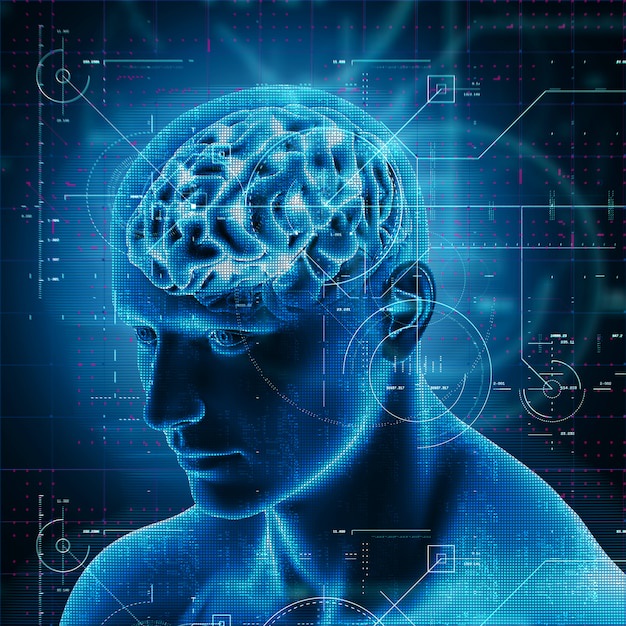In the dynamic landscape of technological innovation, few fields hold as much promise and intrigue as neurotechnology. At the forefront of this revolution are two game-changing concepts: Neurotechnologies and BMI (Brain-Machine Interface) Neurotech. In this article, we embark on a journey to explore the captivating realm of neurotechnology, with a specific focus on BMI Neurotech, unraveling its potential, applications, and the transformative impact it is poised to make in various domains.
Understanding Neurotechnology
Neurotechnology represents a convergence of neuroscience and technology, to harness the power of the brain to enhance human capabilities and address a myriad of challenges. From diagnostic tools and therapeutic interventions to groundbreaking advancements in human-computer interaction, neurotechnology encompasses a diverse array of innovations.
One of the key components of neurotechnology is the Brain-Machine Interface (BMI), a technology that establishes a direct communication link between the brain and external devices. This interface holds immense potential to transform the way we interact with technology, offering new avenues for medical treatments, neurorehabilitation, and augmenting human capabilities.
BMI Neurotech: Bridging the Mind-Machine Divide
BMI Neurotech, a subset of neurotechnology, focuses specifically on the development and application of Brain-Machine Interfaces. These interfaces serve as conduits for translating neural activity into actionable commands, allowing individuals to control external devices or engage with technology using their thoughts.
The applications of BMI Neurotech are broad and impactful. In the medical field, BMIs have shown tremendous potential in assisting individuals with paralysis or motor impairments. By decoding neural signals, these interfaces enable users to control robotic limbs, prosthetics, or even computers, restoring a level of independence and functionality that was once thought impossible.
The advent of non-invasive BMI technologies, such as electroencephalography (EEG) headsets, has expanded the accessibility of BMI Neurotech. These devices allow for real-time monitoring of brain activity without the need for surgical implants, making them suitable for a wider range of applications, from neurorehabilitation to gaming and beyond.
Applications of BMI Neurotech
-
Medical Rehabilitation: BMI Neurotech holds great promise in rehabilitating individuals with neurological disorders or injuries. By facilitating communication between the brain and external devices, these interfaces aid in motor skill recovery, offering new avenues for patients with conditions like stroke or spinal cord injuries.
-
Assistive Technology: BMIs have the potential to revolutionize the lives of individuals with disabilities. From controlling wheelchairs to operating smart home devices, BMI Neurotech provides a means for enhanced independence and improved quality of life.
-
Neurofeedback and Mental Health: BMI Neurotech is increasingly being explored for its applications in neurofeedback therapy. By providing real-time information about brain activity, individuals can learn to regulate their mental states, offering potential benefits for conditions like anxiety, depression, and attention disorders.
-
Human-Computer Interaction: As BMI Neurotech advances, we are witnessing a paradigm shift in human-computer interaction. The ability to control devices with mere thoughts opens up possibilities for more intuitive and seamless interactions, with applications ranging from gaming to virtual reality experiences.
The Future of BMI Neurotech
The future of BMI Neurotech is bright, with ongoing research and innovation poised to unlock new frontiers. Advances in material science, miniaturization, and machine learning are contributing to the development of more sophisticated and user-friendly interfaces. The integration of artificial intelligence with BMI technology enhances the accuracy and speed of neural signal interpretation, paving the way for more seamless interactions between the brain and external devices.
Moreover, the collaborative efforts of neuroscientists, engineers, and healthcare professionals are driving the translation of BMI Neurotech from research laboratories to real-world applications. The potential for BMI Neurotech to enhance the lives of individuals with neurological conditions, improve cognitive performance, and redefine human-computer interactions is on the horizon.
Conclusion
In the rapidly evolving landscape of neurotechnology, BMI Neurotech stands out as a beacon of innovation, offering transformative solutions to longstanding challenges. The seamless integration of the human mind with external technology holds the promise of revolutionizing healthcare, rehabilitation, and the way we interact with the digital world.
As we navigate the frontiers of neurotechnology, it is clear that BMI Neurotech is not just a technological advancement but a catalyst for positive change. The collaboration between the human brain and cutting-edge technology is unlocking new possibilities, and the journey ahead holds the potential to reshape the future of how we perceive, understand, and interact with the incredible power of the human mind.


No comments yet